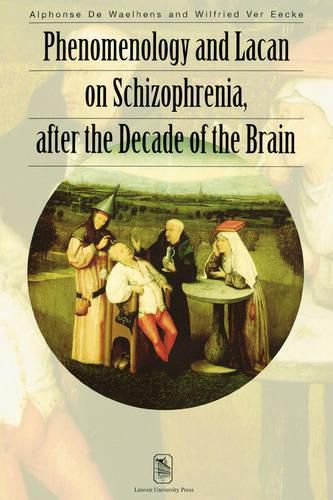Readings Newsletter
Become a Readings Member to make your shopping experience even easier.
Sign in or sign up for free!
You’re not far away from qualifying for FREE standard shipping within Australia
You’ve qualified for FREE standard shipping within Australia
The cart is loading…






In 1972, Alphonse De Waelhens published in French his ‘La Psychose’. It was translated and published in English as ‘Schizophrenia’ in 1978. Here, in the 2001 edition, Wilfried Ver Eecke presents the English translation together with an eleborate essay on the usefulness of De Waelhens theory as an effective approach to schizophrenia, after the decade of the brain. He draws several lessons from evaluating the literature on schizophrenia and also addresses an apparent inconsistency in De Waelhens’ presentation of Lacan’s theory of schizophrenia. Where De Waelhens seemed to argue at one time that the mother figure was the crucial figure to explain schizophrenia and at another time that it was the role of the father which was crucial, Ver Eecke argues that the defective function of each influences the function of the other. In his essay Ver Eecke also reports on successful methods and techniques used by both Lacanian and non-Lacanian therapists to treat persons afflicted with schizophrenia. It is gratifying to notice that even non-Lacanian techniques can be given a Lacanian explanation.
$9.00 standard shipping within Australia
FREE standard shipping within Australia for orders over $100.00
Express & International shipping calculated at checkout
In 1972, Alphonse De Waelhens published in French his ‘La Psychose’. It was translated and published in English as ‘Schizophrenia’ in 1978. Here, in the 2001 edition, Wilfried Ver Eecke presents the English translation together with an eleborate essay on the usefulness of De Waelhens theory as an effective approach to schizophrenia, after the decade of the brain. He draws several lessons from evaluating the literature on schizophrenia and also addresses an apparent inconsistency in De Waelhens’ presentation of Lacan’s theory of schizophrenia. Where De Waelhens seemed to argue at one time that the mother figure was the crucial figure to explain schizophrenia and at another time that it was the role of the father which was crucial, Ver Eecke argues that the defective function of each influences the function of the other. In his essay Ver Eecke also reports on successful methods and techniques used by both Lacanian and non-Lacanian therapists to treat persons afflicted with schizophrenia. It is gratifying to notice that even non-Lacanian techniques can be given a Lacanian explanation.